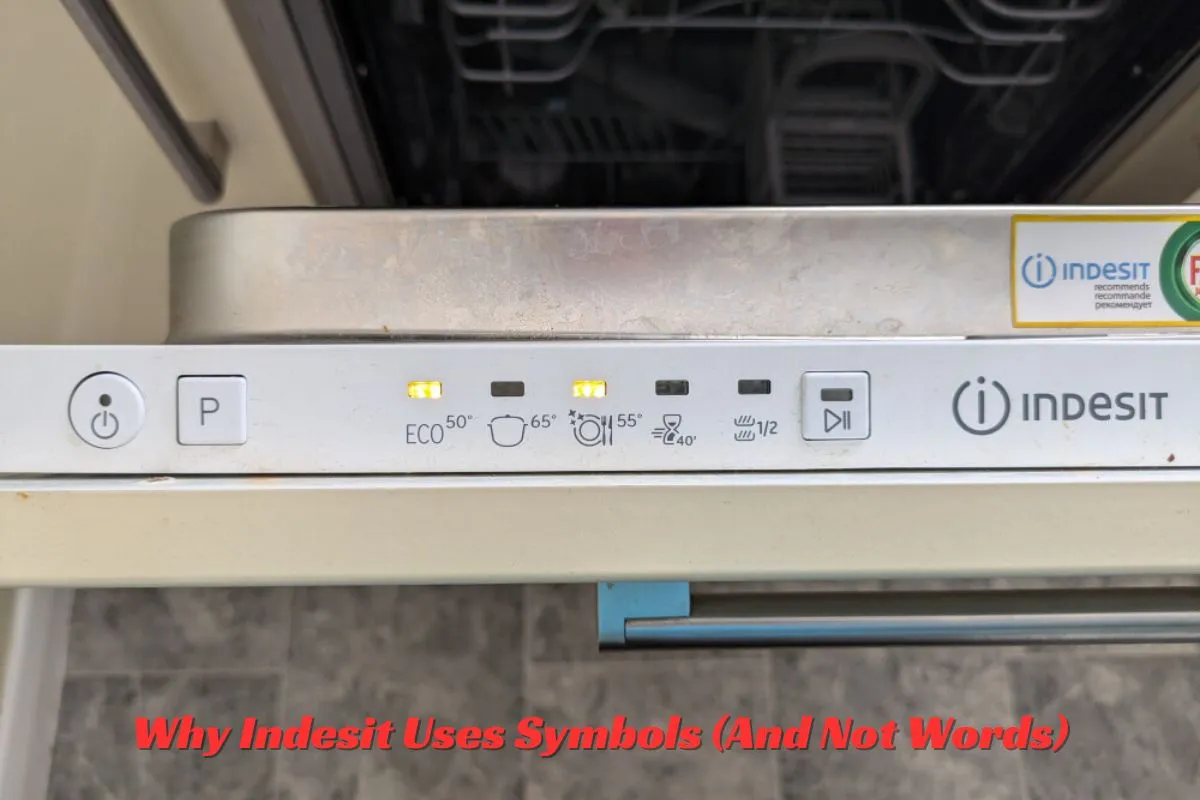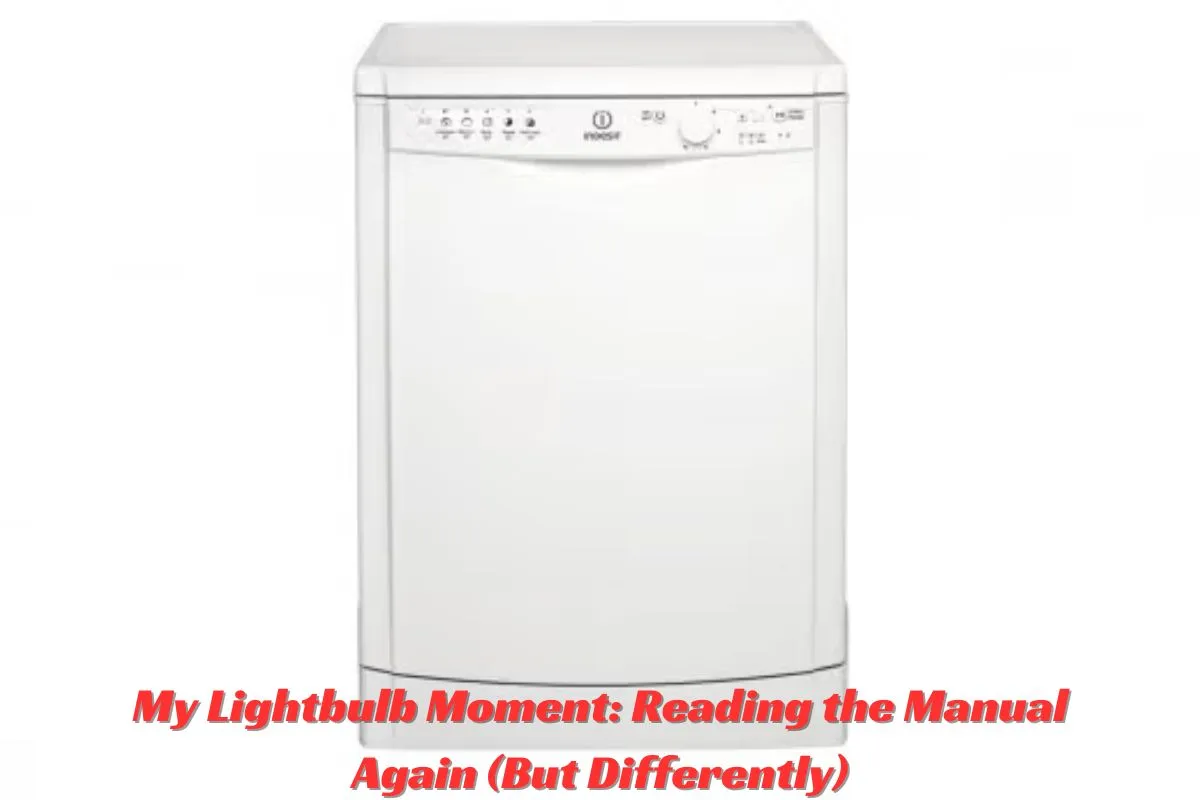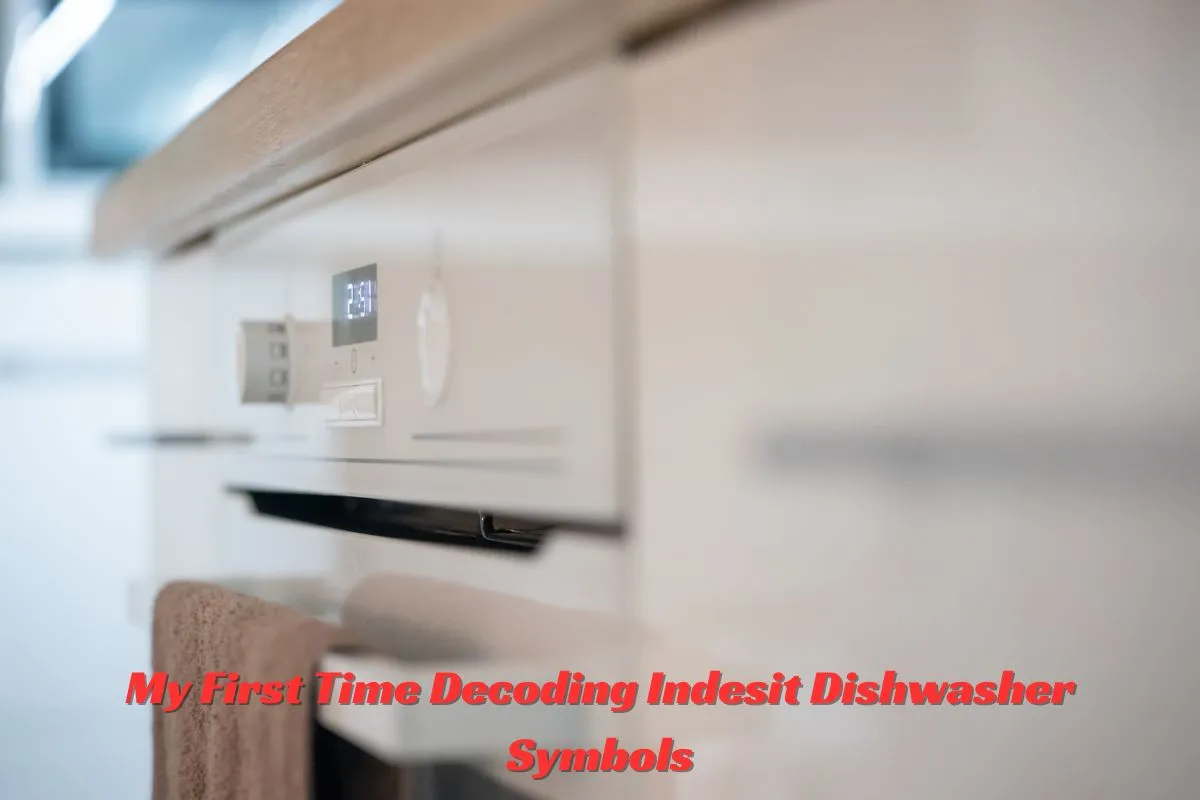When I first got my Indesit dishwasher, I was excited. Finally—no more washing dishes by hand after every meal! But that joy turned into confusion pretty quickly. As soon as I turned it on, a bunch of strange lights and symbols started blinking at me.
There was a plate symbol, a snowflake, a water tap, even a salt shaker. What did they all mean? Was my dishwasher broken already? I had no clue.
This article is for people like me—new Indesit users who just want to get their dishwasher working without feeling like they need a degree in symbols. I’ll share what I learned, step-by-step, in the simplest way possible.
First Impressions: Feeling Lost at the Control Panel
The first time I used my Indesit dishwasher, I loaded the plates, added detergent, closed the door, and pressed “Start.”
But then… blinking lights. Symbols I didn’t understand. Beeping sounds. Panic.
I grabbed the manual. It wasn’t very helpful. It had lots of technical terms and didn’t explain the symbols clearly. I had to figure it out by trial and error—and a little Googling.
If this sounds familiar, don’t worry. You’re not alone. And this article is the guide I wish I had that day.
Why Indesit Uses Symbols (And Not Words)

Before we dive into what each symbol means, it helps to know why they exist.
Indesit, like many modern brands, uses universal icons on dishwashers instead of words. This makes it easier to sell appliances across different countries without having to translate labels.
But for the average person? It can be confusing at first.
Think of these symbols as a secret code. Once you crack them, using your dishwasher becomes super easy.
The Most Common Indesit Dishwasher Symbols (And What They Mean)
Let’s break them down. I’ve listed the ones I saw on my machine (Yours may vary slightly depending on the model).
🍽️ 1. The Plate Symbol (or Dish Symbol)
This usually appears when you’re running a standard wash cycle. It simply means: “Washing in progress.”
✅ Good to know: If it stays on after the cycle ends, it may mean the dishwasher didn’t finish properly. Try opening and closing the door, then press “Start” again.
❄️ 2. The Snowflake Symbol
This one confused me the most. I thought it meant something was cold. Turns out, it’s the Rinse Aid warning.
If this symbol lights up, your dishwasher is telling you to refill the rinse aid compartment.
🧴 Rinse aid helps dry your dishes faster and prevents spots on glasses.
🚰 3. The Water Tap Symbol
This usually means there’s a problem with the water supply.
It could be:
-
The tap is off
-
The inlet hose is blocked or kinked
-
Water pressure is too low
In my case, the tap was slightly loose. I turned it tighter, restarted the dishwasher, and the symbol disappeared.
🧂 4. The Salt Symbol (Looks Like a Small Canister or Dotted Circle)
If you see this light up, it means your dishwasher needs dishwasher salt.
❗Important: This isn’t regular table salt. It’s special salt used to soften water and prevent scale buildup.
I didn’t add salt for the first two weeks, and my dishes came out cloudy. Once I started using it, the difference was clear—literally.
🔁 5. Arrows Forming a Circle (Cycle Symbol)
This usually means a cycle is running or selected.
Sometimes it flashes during the draining or rinsing stages. It’s normal and nothing to worry about.
🔥 6. Steam or Wave Lines Symbol
This symbol appears during the drying phase.
Some models don’t use heated drying, so if you don’t see this symbol on your panel, your dishwasher may use passive drying instead.
🕐 7. Clock or Timer Symbol
This shows up when you’ve delayed a wash cycle. You can set a delay if you want the dishwasher to run later (for example, during off-peak electricity hours).
I once accidentally activated the delay timer and wondered why the dishwasher wasn’t starting. Now I know better.
My Lightbulb Moment: Reading the Manual Again (But Differently)

After my first week of frustration, I did something simple: I read the manual again, but slower.
I noticed small icons next to the text that matched the symbols on the panel. I made a cheat sheet on a sticky note and stuck it to the dishwasher.
Suddenly, it all made sense. It wasn’t so scary anymore.
Bonus Symbols (Not On Every Model)
Some newer Indesit models may show additional icons:
-
Glass symbol: For delicate or glassware cycle
-
Eco leaf: Indicates an energy-saving mode
-
Rapid or 30-min clock: A quick-wash setting
-
Pot or pan: For heavy-duty cycles with more heat and time
✅ Tip: When in doubt, Google the model number + “symbols guide” to find a digital manual with visuals.
How to Know When Something’s Wrong
If you see a symbol flashing, it usually means:
-
Something isn’t connected properly
-
There’s a clog
-
You selected an invalid setting
Once, I forgot to close the door completely. The cycle symbol blinked for five minutes until I noticed. A firm push fixed it.
What to Do If Symbols Don’t Go Away
If a warning symbol stays on:
-
Turn the dishwasher off
-
Wait 1–2 minutes
-
Turn it back on
If that doesn’t help:
-
Check the door
-
Check the water supply
-
Check salt and rinse aid levels
-
Clean the filter
Still not fixed? Time to check the manual or contact Indesit support.
Creating a Symbol Cheat Sheet (Game-Changer!)
Here’s what helped me the most: I made a simple printout of all the symbols with labels and taped it to the inside of my kitchen cabinet.
You can also draw them on a whiteboard or download a guide from Indesit’s official website.
It saves time and reduces stress, especially when you’re in a rush or someone else is using the dishwasher.
Quick Troubleshooting Table
| Symbol | What It Means | What to Do |
|---|---|---|
| ❄️ Snowflake | Rinse aid is low | Refill the rinse aid compartment |
| 🧂 Salt | Dishwasher salt is low | Add dishwasher salt |
| 🚰 Tap | Water supply issue | Check the water tap and hose |
| 🔁 Arrows | Cycle in progress | Let it run or pause properly |
| 🔥 Waves | Drying in progress | Let it finish drying |
| 🕐 Timer | Delay start is active | Cancel the delay if unintended |
How I Teach Guests to Use It
Funny story: My cousin visited and tried to wash his plate. He panicked because the “tap” symbol came on. He thought it meant he had to wash dishes by hand!
I showed him the cheat sheet, and we laughed. Now I always show guests how to use it.
It’s a small thing, but sharing what you know helps others avoid confusion.
What I Wish I Knew Before
Here are 3 things I learned the hard way:
-
Always use the right salt and rinse aid. It truly affects how clean your dishes look.
-
Symbols are there to help, not scare you. Once you learn them, it’s easy.
-
Don’t ignore flashing lights. They usually mean something simple that’s easy to fix.
Final Thoughts: You’ll Get the Hang of It
At first, the Indesit dishwasher symbols made me feel like I was decoding a secret language. But after one week, I felt like a pro. Now I barely even look at the panel—everything feels automatic.
If you’re new to this, give yourself time. Learn the symbols one by one. Make a cheat sheet. Ask for help if needed.
Before long, you’ll be teaching others like I did.
✅ Remember: Your dishwasher is here to make life easier—not more confusing. And you’ve got this!










